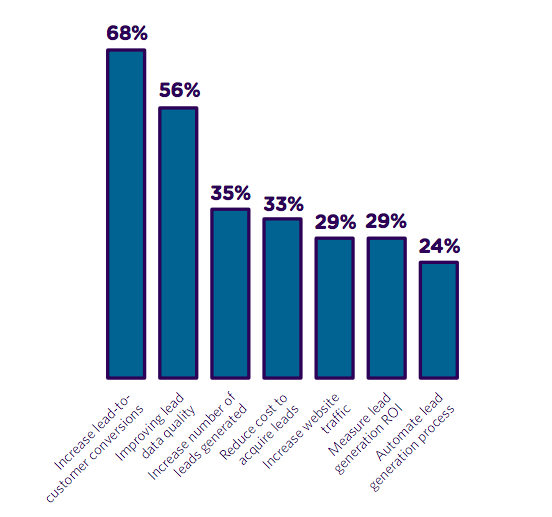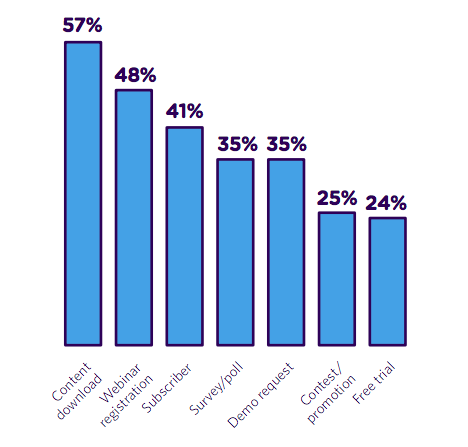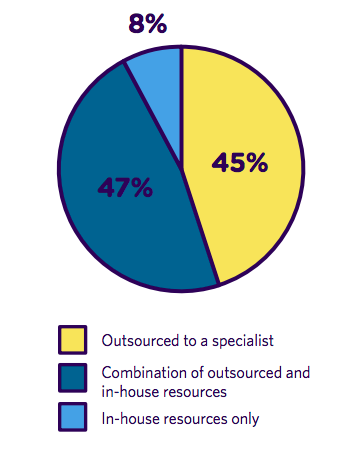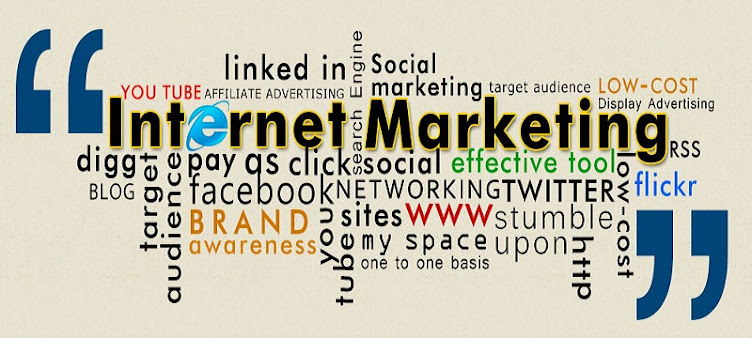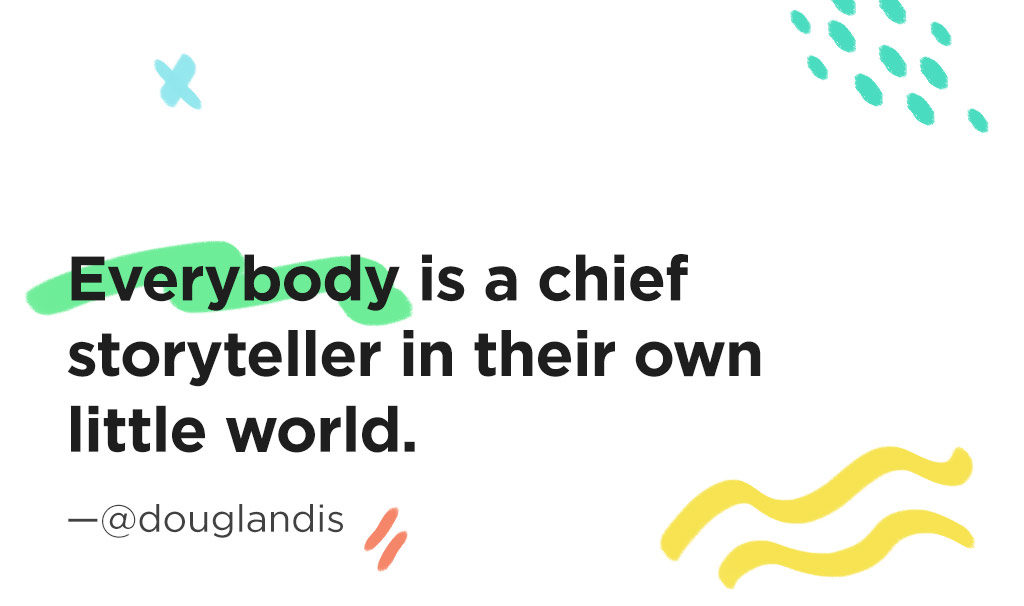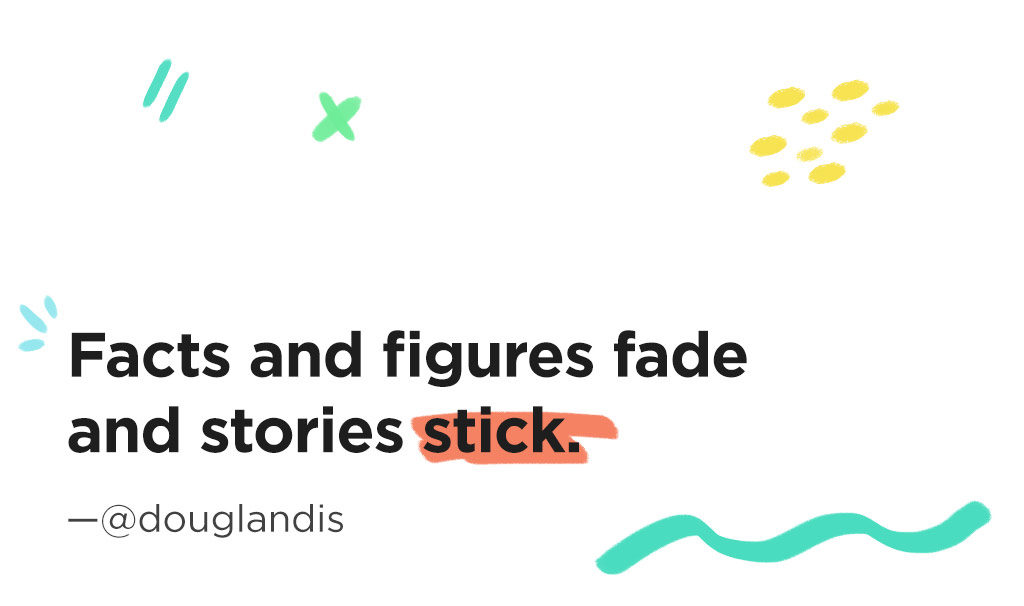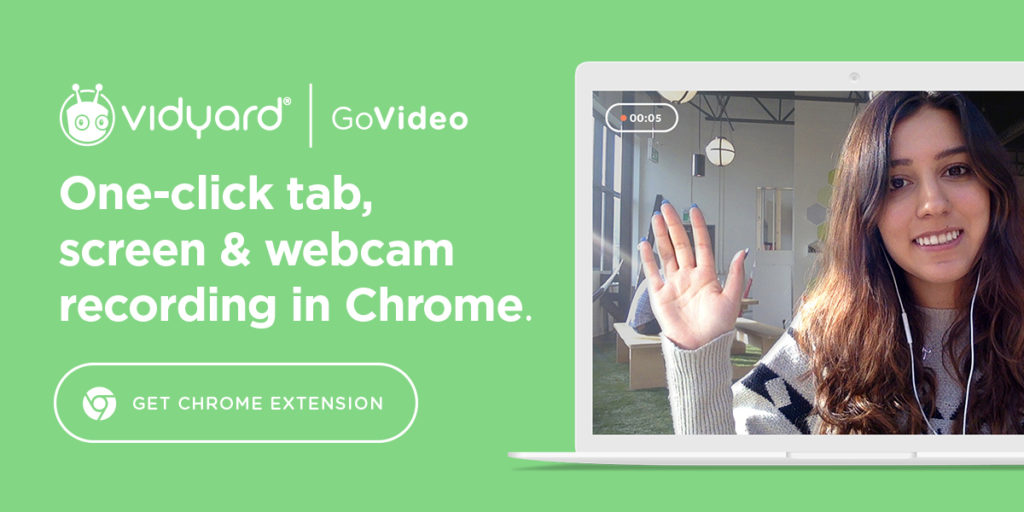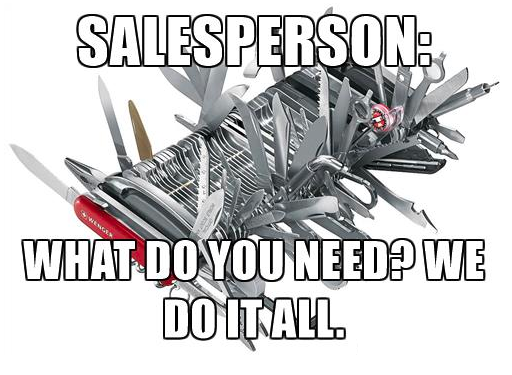Gainsight, SalesLoft, Drift and other technology leaders embrace Vidyard GoVideo to power native video experiences across business applications
KITCHENER, Ontario – Sept 26, 2017 – Vidyard, the leading provider of new generation video platforms for business, is bringing the power of video to a broad range of business applications with its new Vidyard GoVideo partner ecosystem program. Now offered as a free plugin that enables video capture, hosting, sharing and tracking within any third party application, Vidyard GoVideo will power video experiences for leading sales, marketing and customer experience applications including Bolstra, Drift, Engagio, Gainsight®, Influitive, Madison Logic, SalesLoft, Uberflip and WorkRamp.
“Video is a better way to communicate with customers, partners and employees, but until now has not been easy to use within our day-to-day business workflows,” says Michael Litt, co-founder and CEO of Vidyard. “With the Vidyard GoVideo partner ecosystem, we’re changing that. We enable solution providers to add video capture, sharing and tracking capabilities to their existing apps via a turnkey, no-cost solution. Together with our partner ecosystem, we’re helping businesses go video in a way that simply connects with how they do business today.”
Vidyard GoVideo is the company’s revolutionary video messaging app that enables business professionals to easily capture, share and track personal video content. With the launch of the new partner ecosystem, Vidyard GoVideo is now available as a free plugin that can be built into any business application to seamlessly power video experiences for end users. Companies such as Bolstra, Drift, Engagio, Gainsight, Influitive, Madison Logic, SalesLoft, Uberflip and WorkRamp have embraced Vidyard GoVideo to bring the power of video to business communications in a wide variety of use cases, including: sales, marketing, customer success, customer service and employee development.
Video: Extending the Customer Conversation
Vidyard GoVideo addresses the growing demand to use video as a better way to communicate. It’s an easy to use video messaging app for business that delivers a plug and play solution to capture, share and track videos as part of user’s daily business communications. Vidyard enables partners to embed video messaging directly into their applications that allows their end-users:
- Record and share custom webcam videos to deliver a more personalized and engaging message.
- Record and share custom screen capture videos to share information, answer a question, deliver an on-demand presentation and more.
- Access and share existing on-demand videos as well as previously recorded webcam and screen capture videos from their personal library.
- Track the engagement of individual recipients to better understand who is engaging with which content.
Vidyard GoVideo takes care of all the heavy lifting including video capture, cloud-based video hosting and encoding, video playback on dedicated pages, video engagement tracking and video view notifications. Vidyard GoVideo is the easiest way for any business professional to create, share, and track simple personalized video messages. Vidyard GoVideo has more than 130,000 users in over 100+ countries who are improving communications and workflows with video.
Video Across the Business
From improving communications to boosting audience engagement, video has the ability to deliver immediate value to nearly any role in modern business. The following application providers will now leverage Vidyard GoVideo within their Account-Based Marketing (ABM), Customer Advocacy, Customer Success, Sales Acceleration and Training solutions to:
- Bolstra: Enable customer success managers (CSMs) to build better relationships with clients and deliver more personalized one-to-one communications.
- Drift: Connect with website visitors that want to engage in real-time conversations in a more personal and engaging way.
- Engagio: Help marketing and sales teams stand out with key accounts and boost the performance of ABM programs with personalized video outreach.
- Gainsight: Turns deep customer insights into action at scale, including through personalized video communications at all phases of the customer lifecycle.
- Influitive: Accelerate the impact of customer marketing programs by making it easy to capture new video-based customer stories using the Influitive UpShot solution.
- Madison Logic: Help B2B marketers leverage powerful video viewer data and account-based information for more effective, personalized video targeting.
- SalesLoft: Help sales teams boost response rates by more than 300% and accelerate pipeline using personal video messaging for outbound sales prospecting.
- Uberflip: Enable sales reps to easily curate relevant content for key prospects and deliver via personal video messages as a better way to stand out.
- WorkRamp: Instrument and power all forms of employee training including self-led, instructor-led, and virtual training programs with do-it-yourself video content.
“With Vidyard GoVideo, we were able to add video messaging to our existing workflows in a way that was simple, yet powerful,” says Sean Kester, VP of product strategy at SalesLoft. “Video messaging is one of the next big waves for sales acceleration and Vidyard made it easy to deliver this to our customers in a way that is simple, seamless and effective.”
“Personalization and one to one communication are critical parts of modern marketing and sales, and that’s what customers expect today. Video is a key part of that,” says David Cancel, CEO and co-founder of Drift. “With Vidyard GoVideo, our customers can add personalized video to any conversation to build more human connections with potential buyers.”
“At Gainsight, we think a lot about how companies can make their customers successful and believe strongly that personal engagement is a major correlating factor,” says Karl Rumelhart, chief product officer at Gainsight. “Video should be a key part of every company’s Customer Success strategy — we are excited to bring this vision to life by extending our native video capabilities within Gainsight with Vidyard GoVideo.”
To learn about partnership opportunities or to apply to Vidyard’s GoVideo Partner Ecosystem program, email govideopartners@vidyard.com with your name, title, email, description of your product/technology, how many end users do you have approximately, and your development
More Information:
About Vidyard
Vidyard is the video platform for business that helps organizations drive more revenue through the use of online video. Going beyond video hosting and management, Vidyard helps businesses drive greater engagement in their video content, track the viewing activities of each individual viewer, and turn those views into action. Global leaders such as Honeywell, McKesson, Lenovo, LinkedIn, Cision, Citibank, MongoDB and Sharp rely on Vidyard to power their video content strategies and turn viewers into customers.
Media Contact:
Sandy Pell, Senior Manager, Corporate Communications. Vidyard. Email: press@vidyard.com
The post Vidyard Brings the Power of Video to Any Business App with Vidyard GoVideo Partner Ecosystem appeared first on Vidyard.
source
https://www.vidyard.com/press-releases/vidyard-brings-power-video-business-app-vidyard-govideo-partner-ecosystem/
